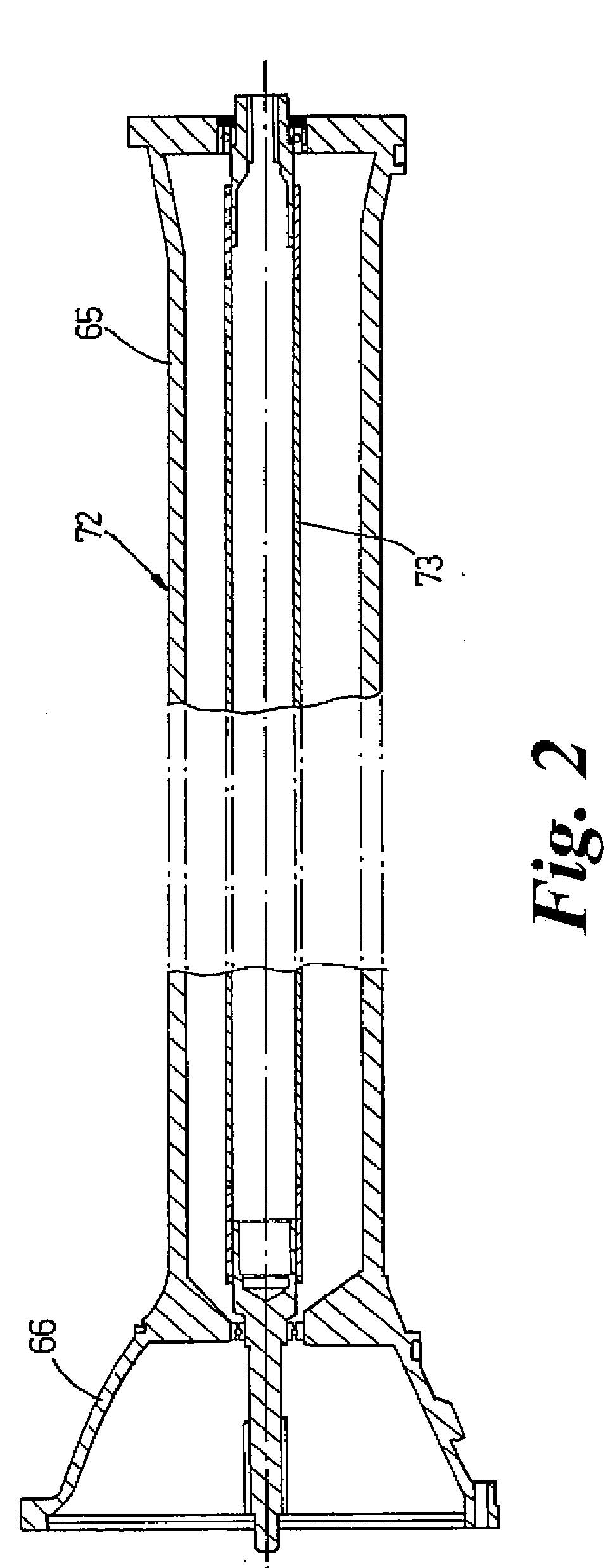Assembly of a motor vehicle body and a power train and chassis module
a technology for motor vehicles and chassis, applied in the field of motor vehicles, can solve the problem that the engine cannot be easily fitted to the vehicle, and achieve the effect of simplifying the motor vehicle assembly
- Summary
- Abstract
- Description
- Claims
- Application Information
AI Technical Summary
Benefits of technology
Problems solved by technology
Method used
Image
Examples
Embodiment Construction
[0026] Referring now to the drawings, FIG. 1 shows a motor vehicle that has a vehicle body 58 with passenger compartment. As shown in FIG. 1, the body 58 is being assembled to a power train and chassis module 71 which comprises a powertrain assembly 64 and front and rear subframes 44, 68. The powertrain assembly 64 includes an engine 63, a longitudinally extending torque tube 65 attached to the rear of the engine by a bell housing 66 and a rear transmission and final drive assembly or transaxle 67 attached to a rearward end of the torque tube 65 for driving rear wheels of the vehicle The torque tube 65 and the bell housing 66 are formed as a single casting and form part of a torque tube and drive shaft assembly 72 as seen more clearly in FIG. 2. The torque tube and the bell housing casting rigidly connects the block of the engine 63 and to the casing of the transaxle 67 while a drive shaft 73 carried in bearings within the torque tube 65 can transmit power from the engine 63 to the ...
PUM
 Login to View More
Login to View More Abstract
Description
Claims
Application Information
 Login to View More
Login to View More - R&D
- Intellectual Property
- Life Sciences
- Materials
- Tech Scout
- Unparalleled Data Quality
- Higher Quality Content
- 60% Fewer Hallucinations
Browse by: Latest US Patents, China's latest patents, Technical Efficacy Thesaurus, Application Domain, Technology Topic, Popular Technical Reports.
© 2025 PatSnap. All rights reserved.Legal|Privacy policy|Modern Slavery Act Transparency Statement|Sitemap|About US| Contact US: help@patsnap.com



